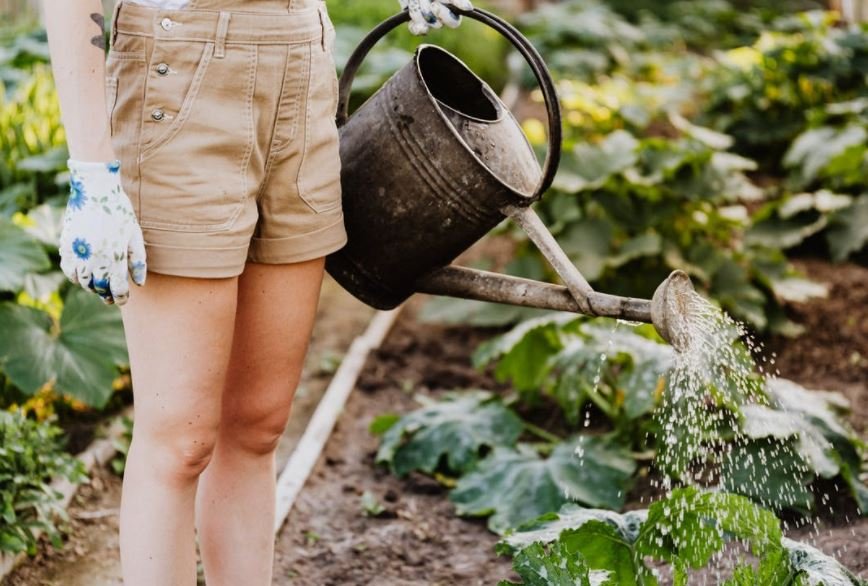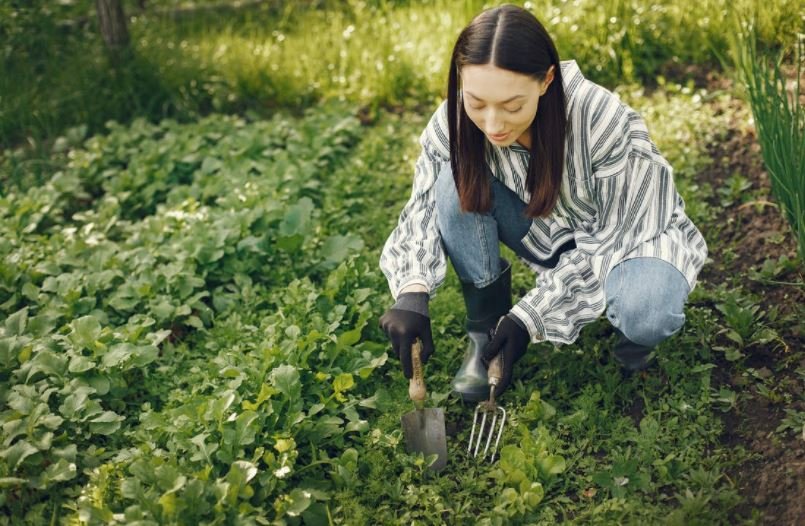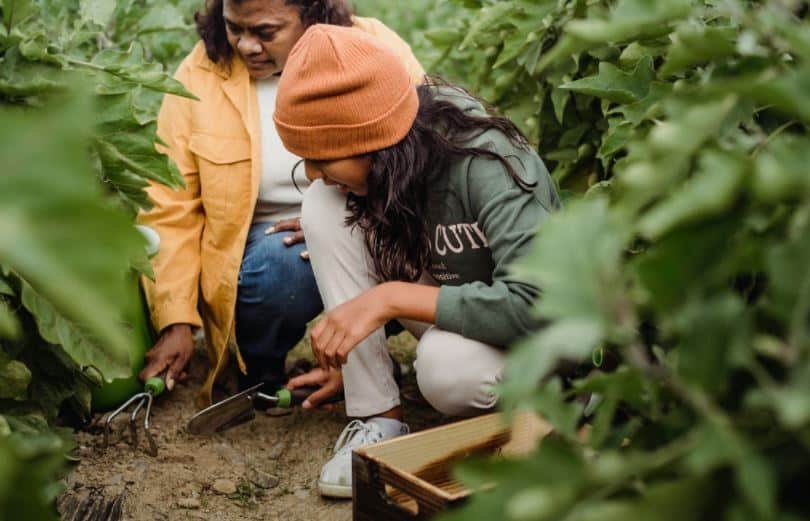Garden
Gardening for Beginners: 13 Steps to Get Started

When looking for a hobby, many people like to opt for something that will yield tangible results at some point. If that is why you chose gardening, you made a great decision as this amazing activity can not only provide you with food but with various health benefits as well. Another advantage of gardening is that it can be done both outside and in your home. However, in case you’re not sure where to start when it comes to gardening, keep on reading for thirteen steps that can get any beginner on their feet.
[lwptoc]
Choose what you will be planting
Your first step towards a successful garden is deciding on what you will be growing. There are many things to consider here. For starters, if you want to grow food, it’s always a good idea to opt for something that your household members like to eat. That way, you will not be growing arugula if no one likes to eat it. Stick to those plants that everyone is a fan of, like potatoes and lettuce. Then, if you’re looking for something a bit more casual that will take your mind off other obligations, you can also start a flower garden. Choose flowers that you think look beautiful or are easy to take care of. Furthermore, it’s also recommended to check which plants are well suited for the area you live in. Some plants will simply not be able to thrive in the conditions you can provide them with.
Pick between seeds and seedlings
The next thing you have to settle is whether you will start your garden from seeds or seedlings. Seeds can be more affordable but there are some other factors to consider. For example, if you live in a region that has a short growing season, seedlings might be more practical. Other things to take into account include how easy a plant is to germinate from seeds and how well it’s transplanted. Of course, you can also combine the two approaches, especially if you will have a garden that includes everything from beans and beets to celery and kale.
Keep companion planting in mind
When choosing plants, something else you should keep in mind is the practice of companion planting. This approach to gardening means that you will group crops that can help each other out. For instance, basil, carrots, and spinach are often planted near tomatoes. On the other hand, you don’t want tomatoes next to peas and cabbage. It’s a good idea to read up a bit more on the plants you want to grow and see which ones are best placed in the same area.
Decide on the right place for your garden

Another important step you shouldn’t overlook is finding the right location for your garden. You need to keep in mind that certain plants like peas, beans, corn, tomatoes, peppers, and cucumbers need full sun to thrive. That means at least six hours of direct sunlight per day. You want to carefully consider the space you are working with and see whether you can provide these crops with the conditions they require. If certain parts of your garden are showered in sunlight, that is where you should put your garden beds. On the other hand, if you’re dealing with more shade, you want to opt for varieties that tolerate it, such as kale, chard, and spinach.
Have your soil tested
Something else that can impact the success of your gardening endeavor is the soil you are using. With that in mind, it’s recommended that you have your soil tested before you start planting. You can order a home test kit online and do it yourself but it’s better to take a sample to a local nursery and have the professionals do this for you. That way, you will know if the soil is lacking some essential nutrients like potassium or nitrogen. Moreover, these tests can also show the pH levels of the soil, which is also important as certain plants like neutral while others need acidic or alkaline soil. In case the tests show that your soil is not ideal, you can either work on amending it or purchase bags of quality soil.
Prepare your garden beds
One thing you should think about doing is using raised garden beds. These make it easier to use and amend the soil, approach the plants when they need tending to, and can even be moved if the necessity arises. Before you plant anything, you want to ensure that the soil in the planting beds is loose. This will help the roots grow strong because they can absorb air, water, and nutrients much easier. Furthermore, if the test results are less than optimal, you want to add the required amends by using fertilizer or mixing in some organic matter.
Get all the necessary tools
To be able to do everything you need to do to prepare and take care of your garden later on, you will need some equipment. For starters, quality garden tools like forks, weeders, trowels, and knives are just some of the items you will need. Pruners, secateurs, and shears will all come in handy as well. Then, you will need to properly equip yourself for watering your garden, so see whether getting a soaker or weeper hose is better than using a watering can. You might also require some heavy-duty planter bags as well as a wheelbarrow or garden cart. Lastly, you shouldn’t overlook protective gear so look for garden gloves, knee pads or mats, and an apron that will help you keep tools within arm’s reach.
Plant carefully
Once you’re equipped with all the necessary tools, you can finally start planting the fruits, veggies, herbs, or flowers you’ve chosen. If this is your first time planting something, fret not as seeds packets and transplant containers typically come with some basic instructions. Even if they don’t, you can easily find a YouTube tutorial that will show you how to properly plant the seeds or seedlings so that you have a thriving garden.
Learn how to water properly
After you’ve planted your seeds and seedlings, you shouldn’t forget to water them. However, you don’t want to be excessive when it comes to watering. While it can all depend on the plant, most plants prefer being dry to sopping wet as soggy soil can lead to root rot. That means that you should touch the soil before you water it. If the top two inches are dry, you can water. Typically, you will need to provide plants with an inch of water per week so if there was plenty of rain during the week, you might not have to water at all. What is more, garden drainage is really important so you want well-draining soil as well in order to protect your plants.
Apply the right fertilizer at the right time

Besides water, you will also have to feed your garden. Fertilizers come in various forms including both organic and inorganic options. If you want to make sure there are no harsh chemicals in your soil and food, stick to organic. However, seeing as how they are slow-releasing, you might need something inorganic if you want the fertilizer to act quickly.
Start your compost
If you want organic fertilizer, there is nothing better than starting your compost. While this might seem like another unnecessary responsibility, composting is great for the environment as you will be cutting down on your waste and you can save some money on fertilizer. With that in mind, you can put all your kitchen leftovers and scraps into your composting bin as well as most of your garden waste, as everything from tea bags and veggie peelings to dead leaves and wood chips can be composted.
Use mulch
Then, you also want to make the most of mulch. Using mulch comes with various benefits. For instance, it will help you keep the moisture in as it prevents the sunlight from reaching the soil and the water from evaporating quickly, which means you won’t have to water as much. Then, it can also help you prevent weeds from sprouting. Mulch comes in a wide array of options, from straw and shredded bark to river rock and cocoa bean shells. Using an organic alternative will also nourish the soil over time.
Protect your garden from weeds and pests
While mulch is a great way to stop weeds, you might also have to go for various pre and post-emergent herbicides to keep these pesky intruders at bay. Furthermore, sooner or later, you will be faced with some insects or critters. When trying to handle them, you can either opt for chemical pesticides or look into some natural ways of keeping them away. For instance, attracting some beneficial insects that are natural predators to pests can keep your crops safe. You can try to attract ladybugs, as they can eat about 50 aphids on a daily basis.
It’s always recommended to start small and expand as you hone your gardening skills. Be patient and persistent, and don’t give up even if you don’t succeed the first time.
-

 Celebrity4 weeks ago
Celebrity4 weeks agoIs YNW Melly Out Of Jail? What Is The YNW Melly Release Date, Career, Early Life, And More
-

 Sports4 weeks ago
Sports4 weeks agoMore Than Just a Game: How College Sports Can Shape Your Future
-

 Tech3 weeks ago
Tech3 weeks agoAI Software: Transforming the Future of Technology
-

 Tech3 weeks ago
Tech3 weeks agoAll About Com. Dti. Folder Launcher: Features, Benefits, Tips, And More













